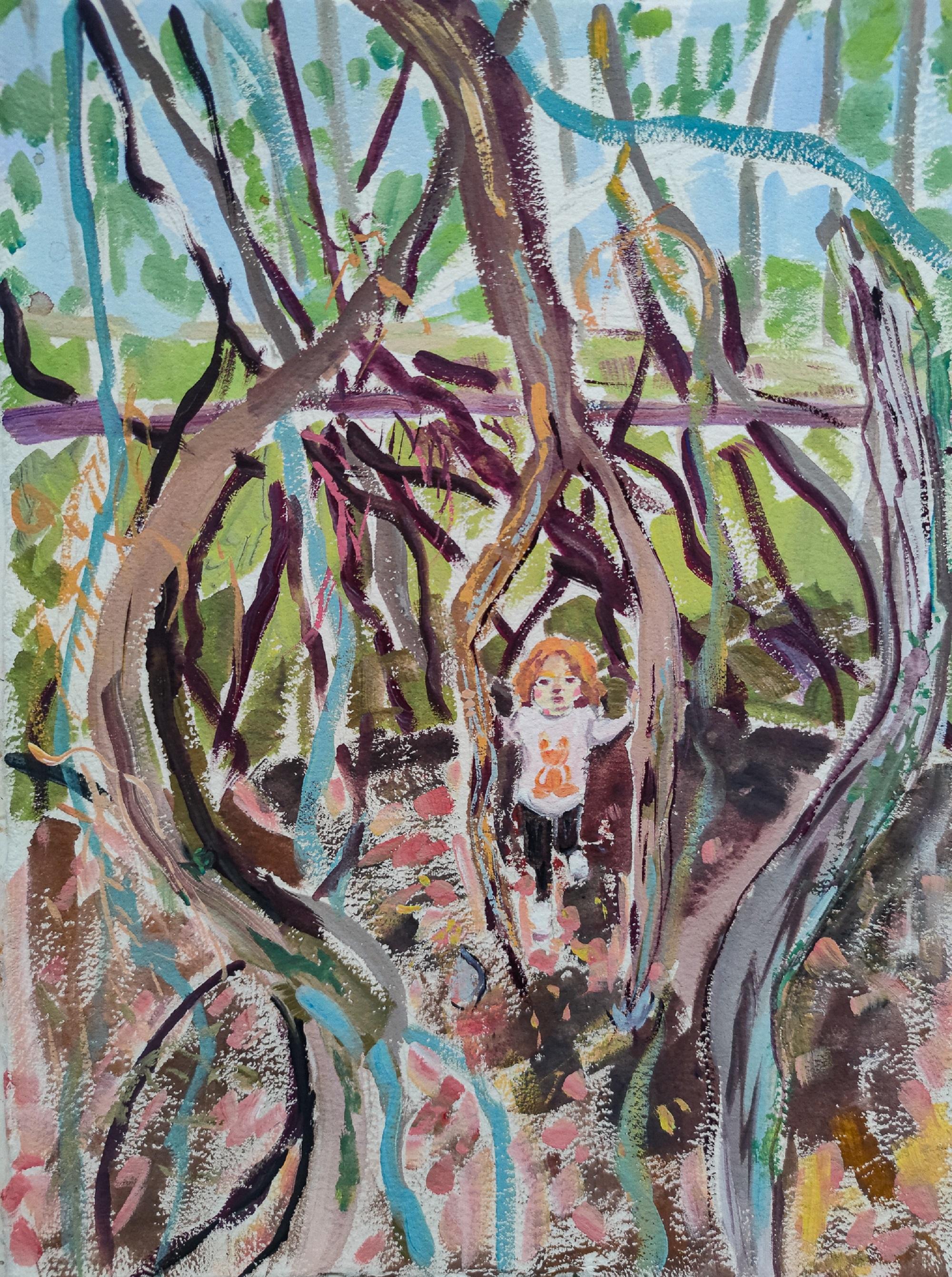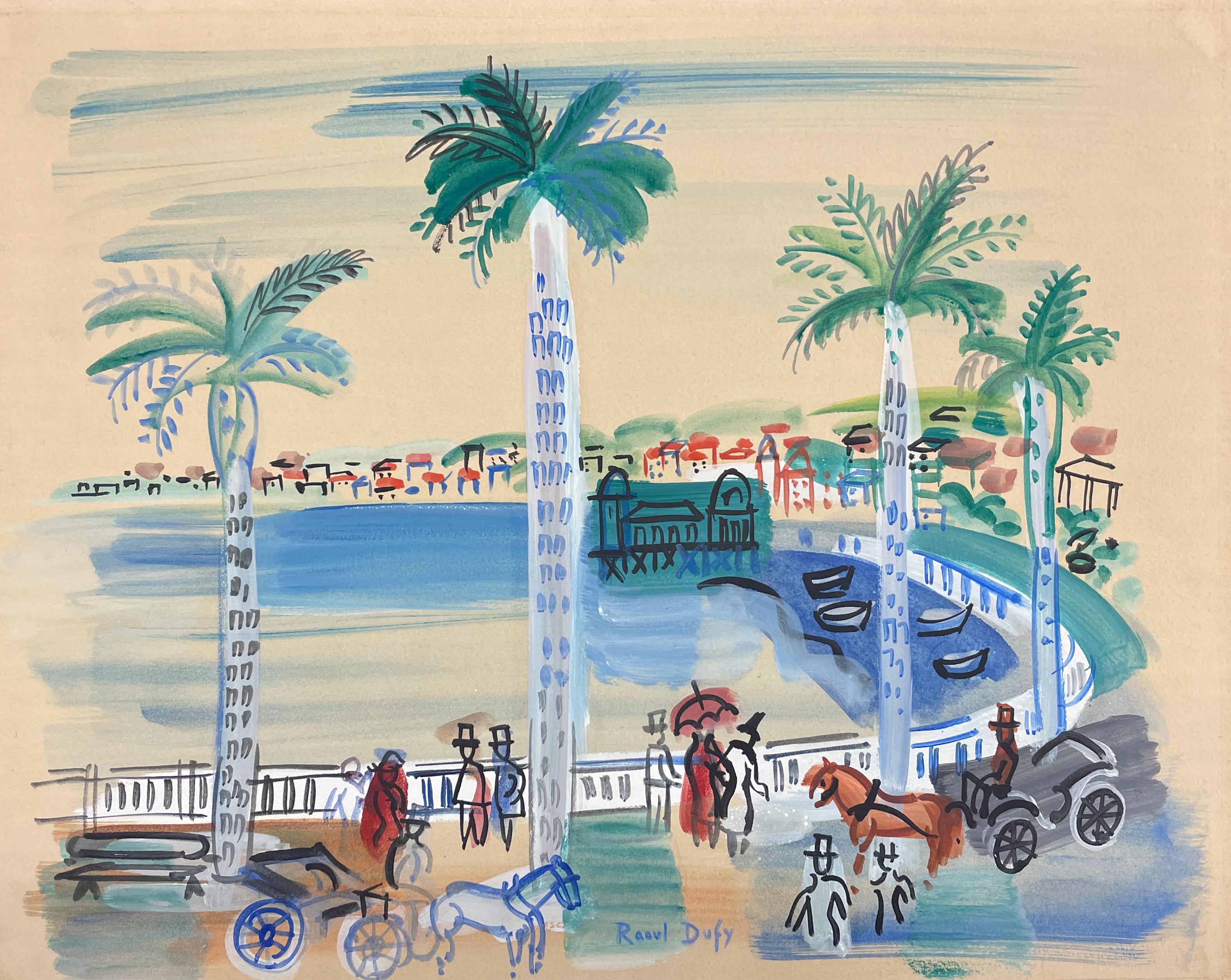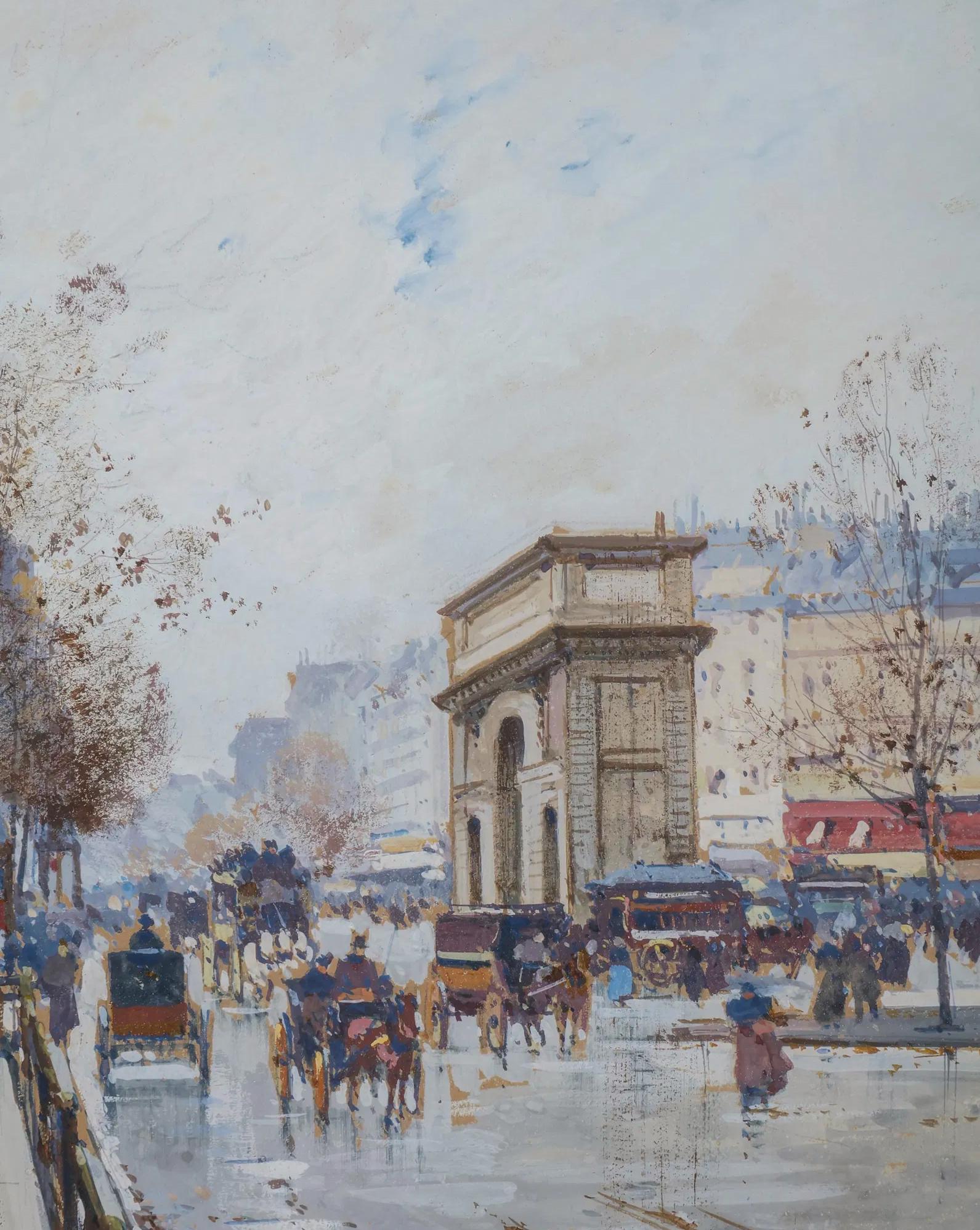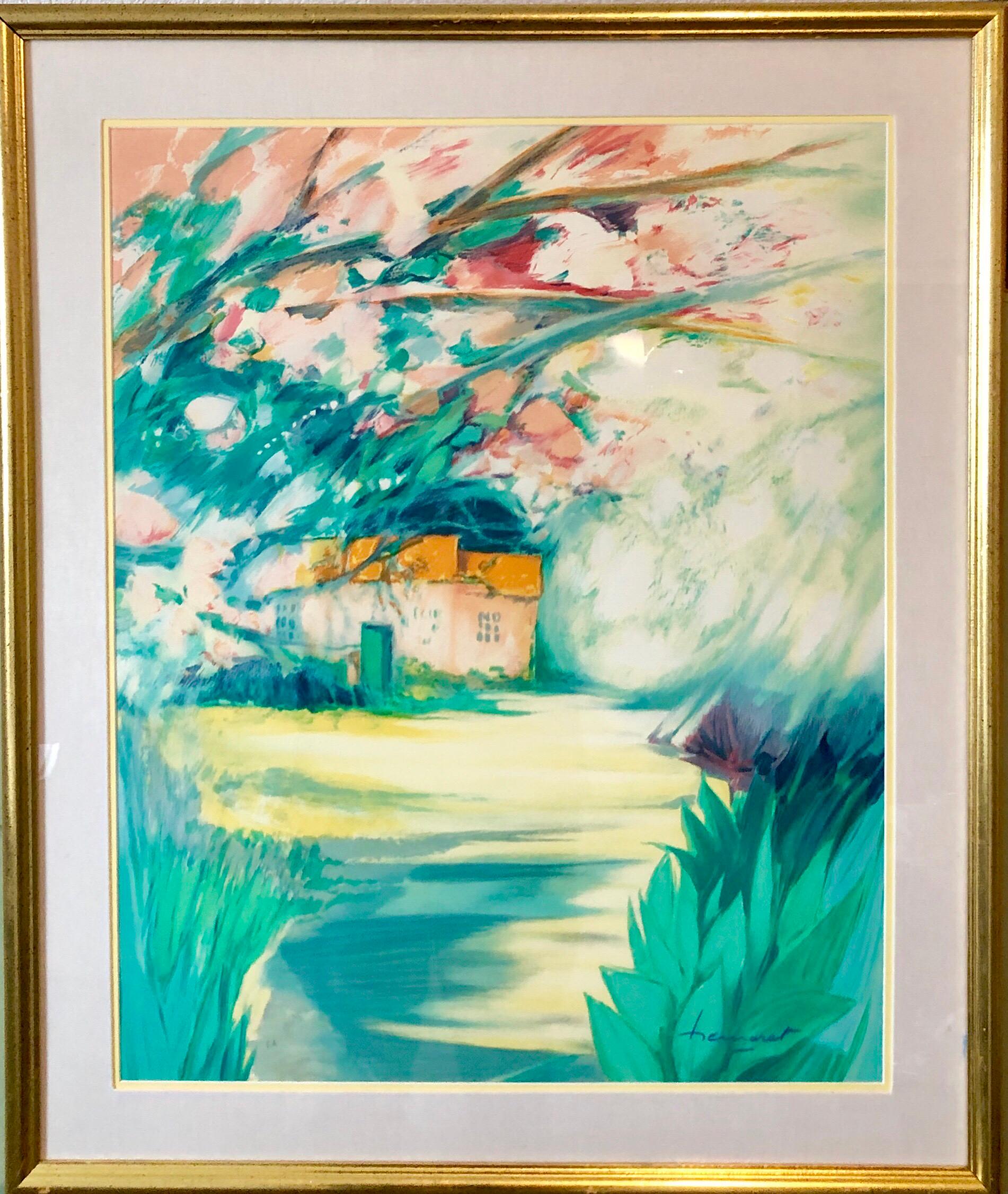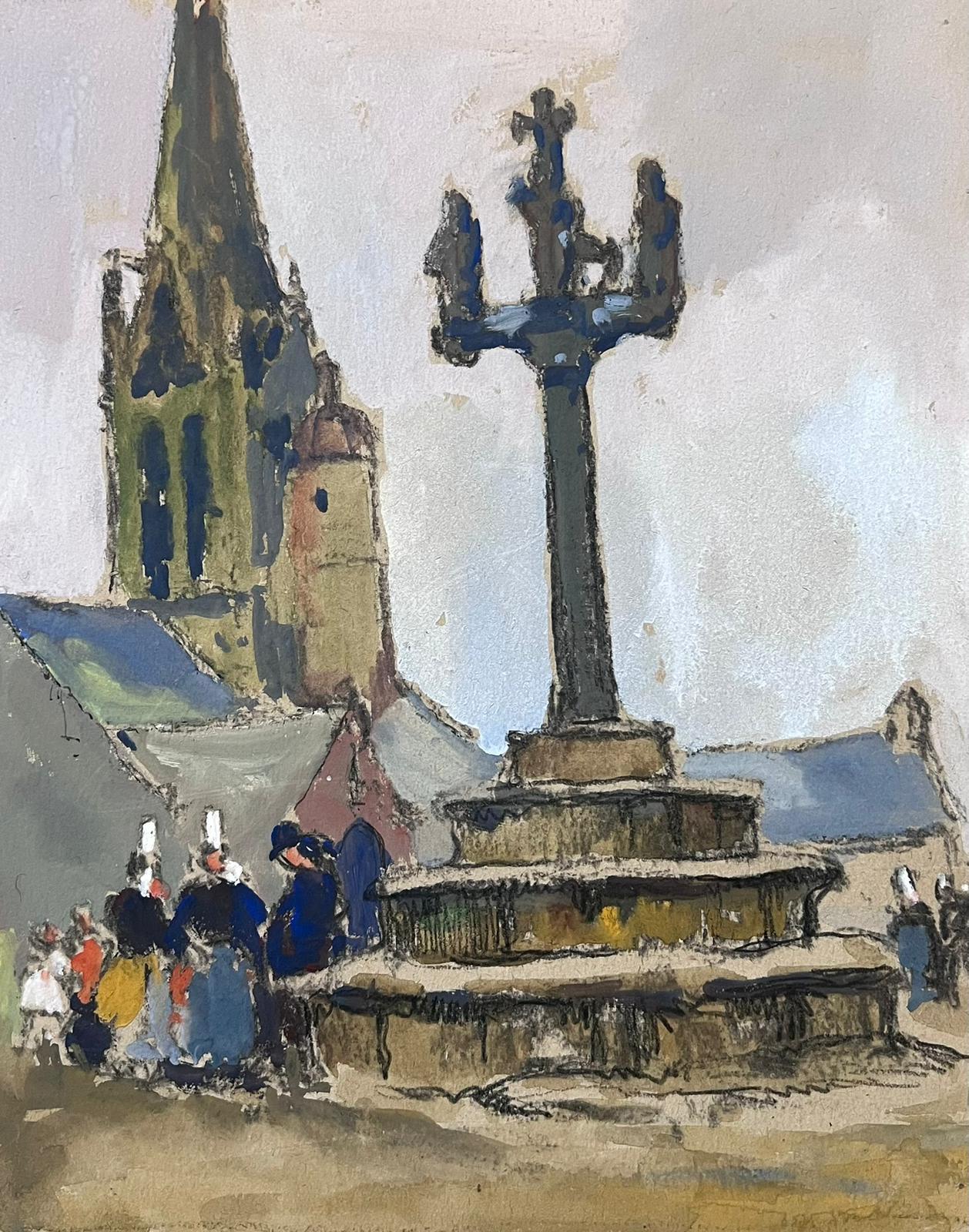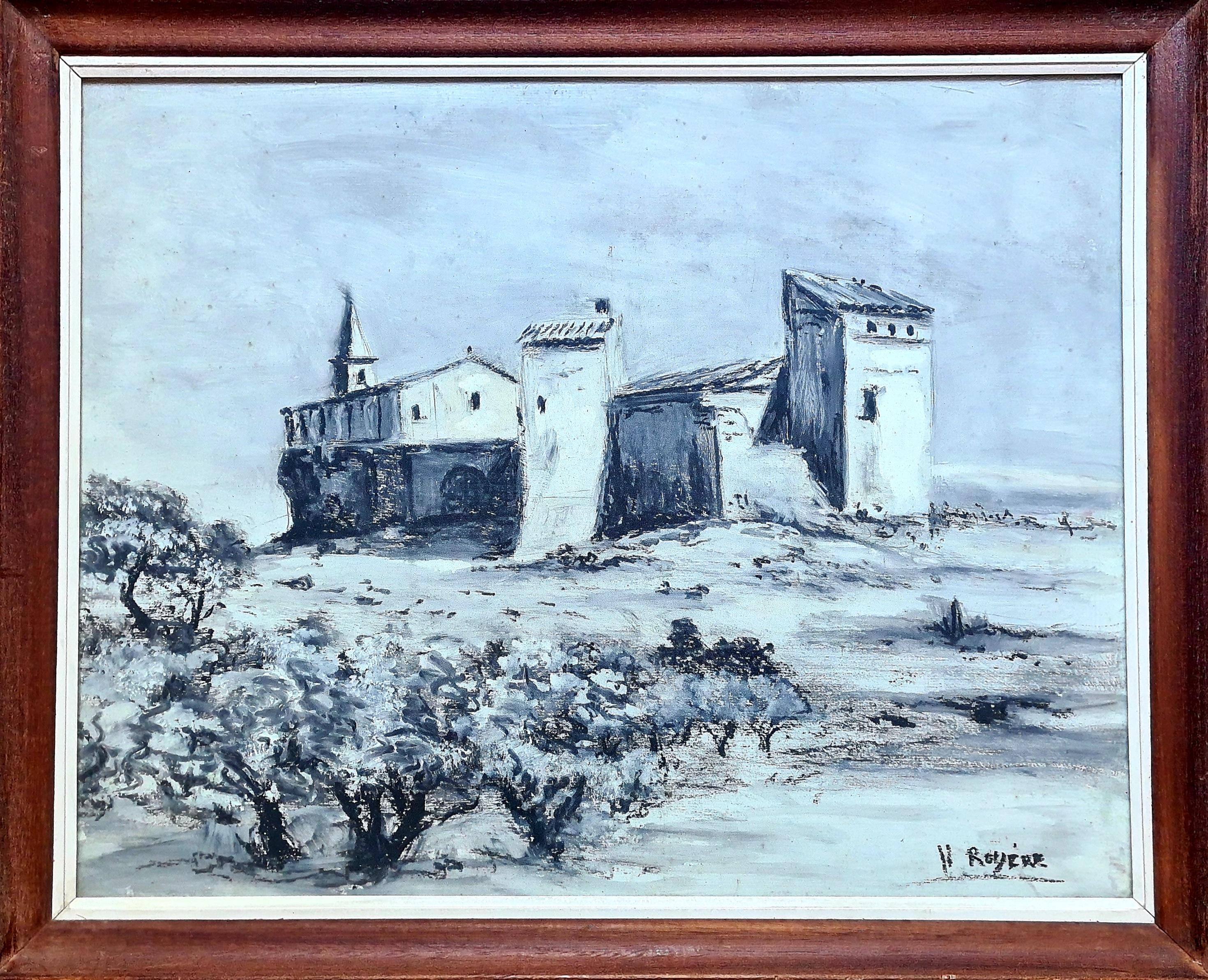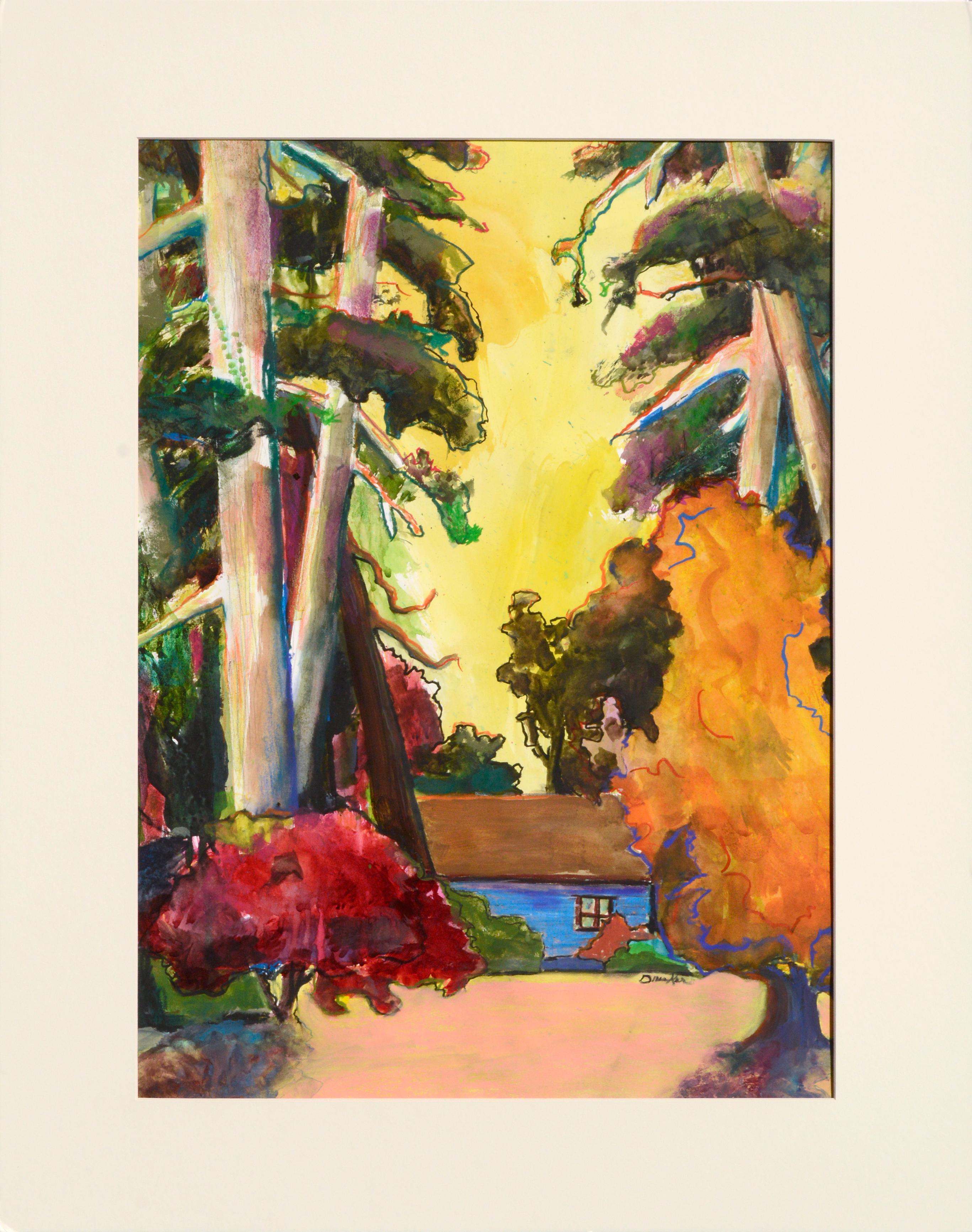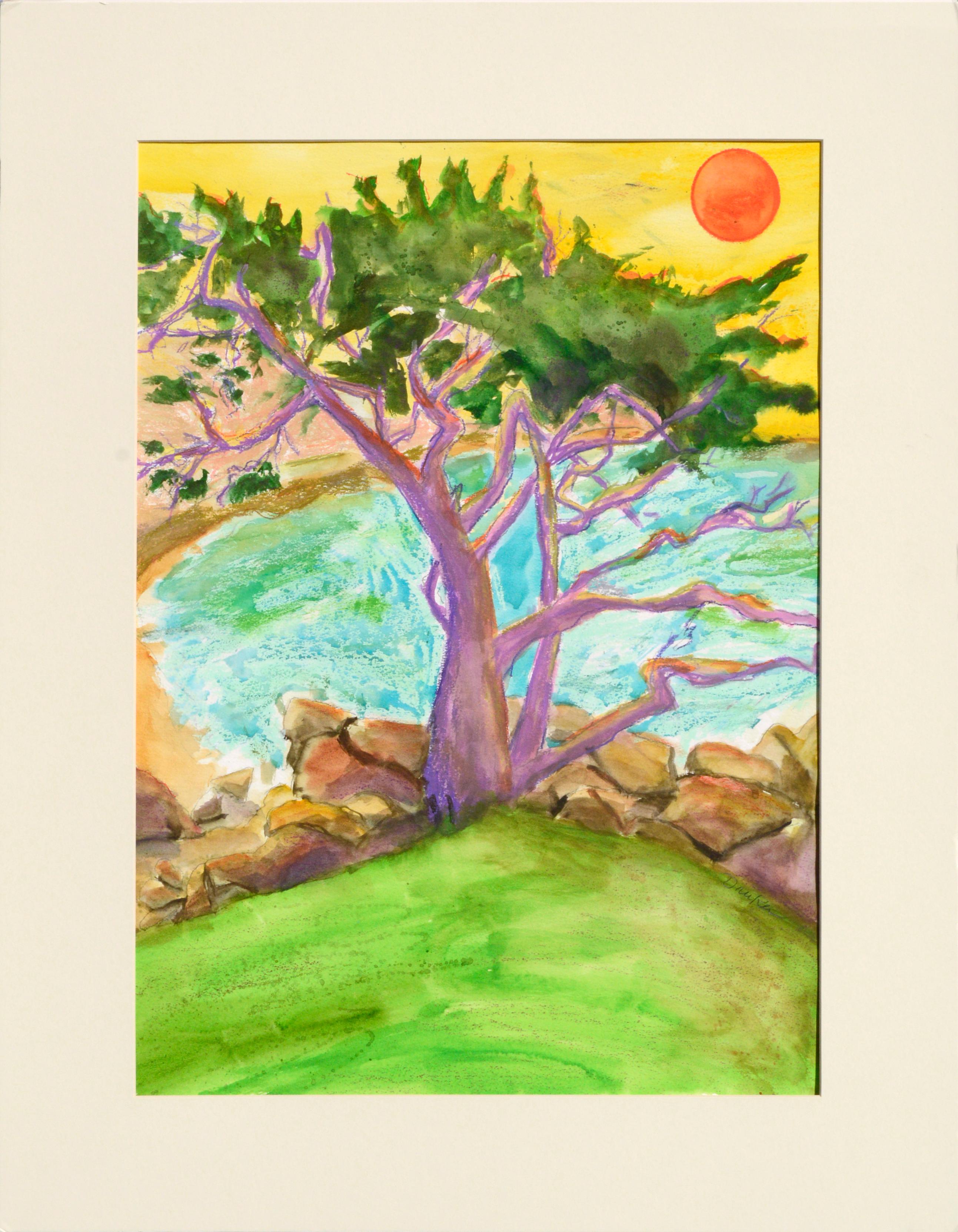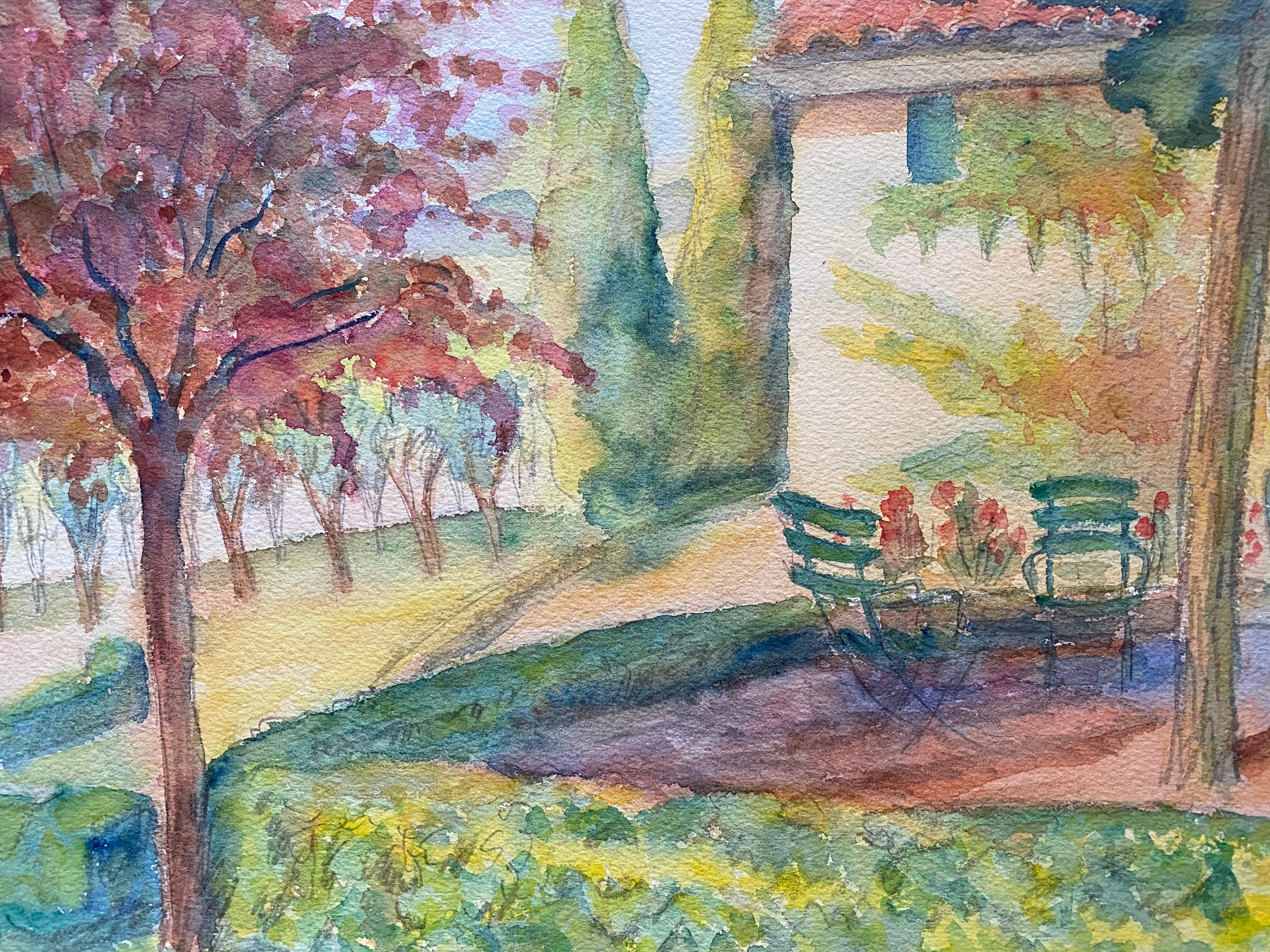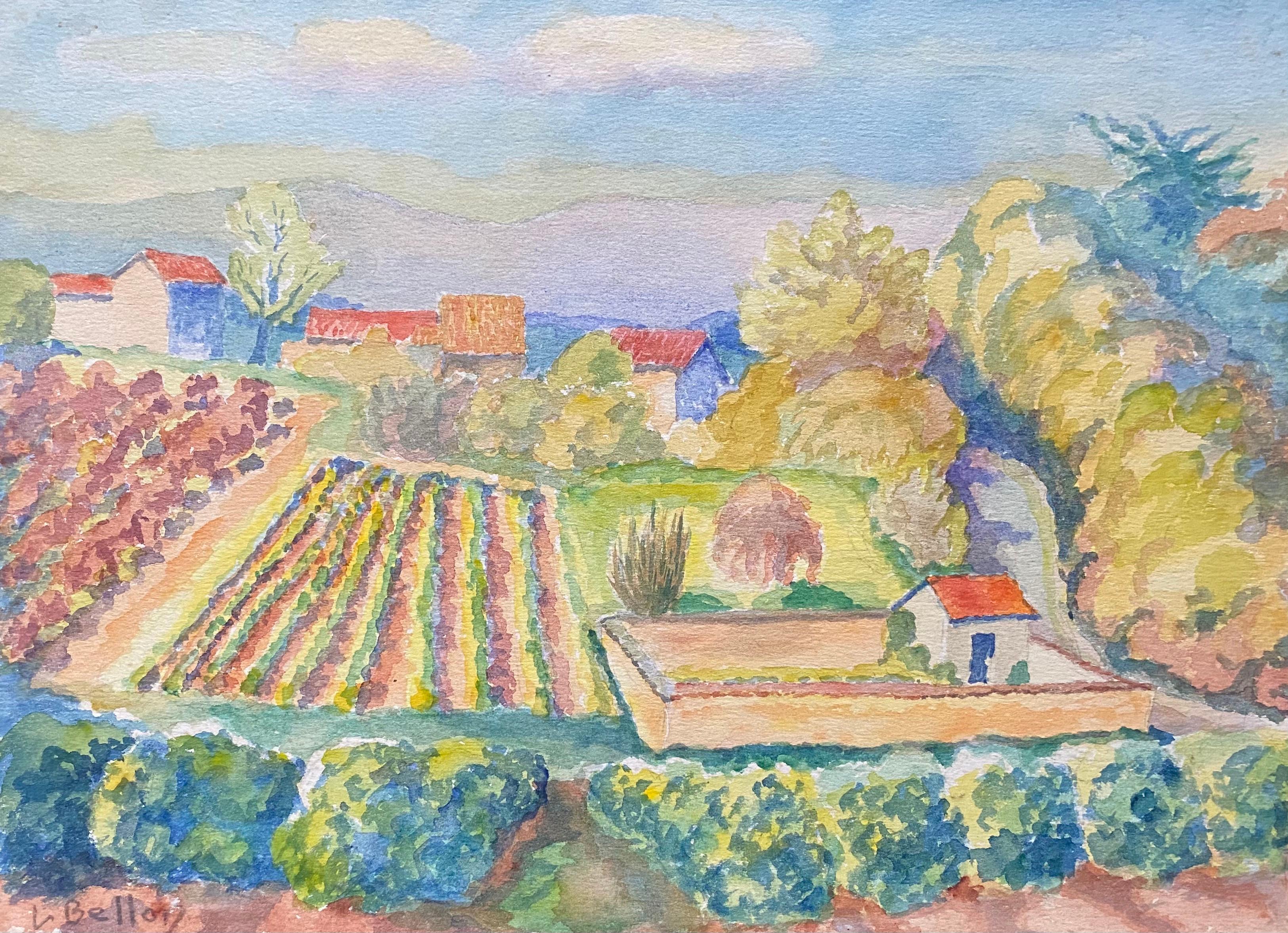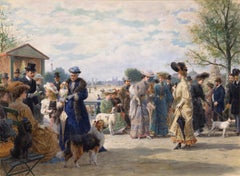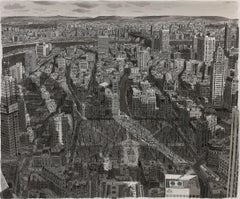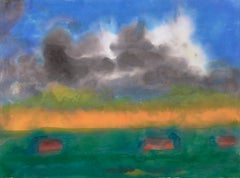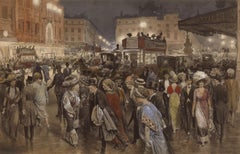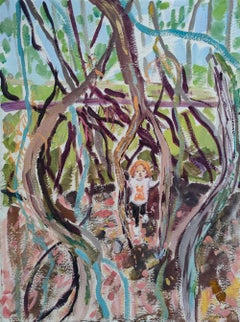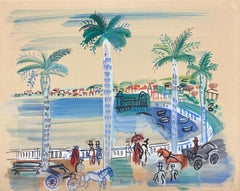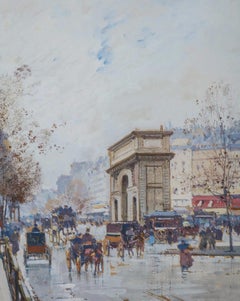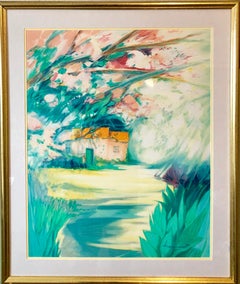
Bottes de paille by Maurice de Vlaminck
View Similar Items
Want more images or videos?
Request additional images or videos from the seller
1 of 8
Maurice de VlaminckBottes de paille by Maurice de VlaminckCirca 1945
Circa 1945
About the Item
- Creator:Maurice de Vlaminck (1876-1958, French)
- Creation Year:Circa 1945
- Dimensions:Height: 22.75 in (57.79 cm)Width: 26.38 in (67.01 cm)Depth: 3 in (7.62 cm)
- Medium:
- Movement & Style:
- Period:
- Condition:
- Gallery Location:New Orleans, LA
- Reference Number:Seller: 31-59891stDibs: LU18611518342
Maurice de Vlaminck
Maurice de Vlaminck was a French painter, best known as one of the spearheads of the Fauvism movement at the start of the 20th century. His reputation rests predominantly on his landscapes, though he also produced still lifes and portraits. Born in Paris in 1876, Vlaminck had relatively little artistic training and, as a young man, dreamt of becoming a professional cyclist. A chance encounter in 1900, however, when he was nearing the end of his national service in the army, proved fateful. It was with the budding artist, André Derain, whom he met when a train they were aboard derailed. The pair lived in the small town of Chatou, a few miles along the River Seine from Paris, and they chose to complete their homeward journey from the French capital that day on foot. They struck up a friendship, and before long were sharing a studio. Derain and Vlaminck would become, alongside Henri Matisse, the driving forces behind Fauvism, the first avant-garde art movement of the 20th century. Partly inspired by the recent innovations of Paul Gauguin and Vincent van Gogh, it was characterised by aggressive brushwork, simplified forms and intense non-naturalistic colours. Its name came from the reaction of a critic in 1905 who compared the artists to fauves (‘wild beasts’). Vlaminck enjoyed painting in primary colours, and is particularly associated with scenes set in and around Chatou. Standout examples include Restaurant de la Machine à Bougival (1905) (today found in the Musée d'Orsay) and The Seine at Chatou (1906) (found in the Metropolitan Museum of Art in New York). The poet Guillaume Apollinaire hailed Vlaminck as ‘the wildest of the Fauves’. In the years immediately before the outbreak of World War I, the artist’s style shifted. His palette grew slightly more sombre, and there was a greater emphasis on solidity and a landscape's underlying structure. This revealed the influence of Paul Cezanne — the subject of a ground-breaking, posthumous retrospective in Paris in 1907. Vlaminck worked in a munitions factory during the war. His paintings after it were much darker and more realistic than those with which he had made his name. He died in 1958, aged 82.
About the Seller
5.0
Vetted Professional Seller
Every seller passes strict standards for authenticity and reliability
Established in 1912
1stDibs seller since 2013
16 sales on 1stDibs
Typical response time: 6 hours
Authenticity Guarantee
In the unlikely event there’s an issue with an item’s authenticity, contact us within 1 year for a full refund. DetailsMoney-Back Guarantee
If your item is not as described, is damaged in transit, or does not arrive, contact us within 7 days for a full refund. Details24-Hour Cancellation
You have a 24-hour grace period in which to reconsider your purchase, with no questions asked.Vetted Professional Sellers
Our world-class sellers must adhere to strict standards for service and quality, maintaining the integrity of our listings.Price-Match Guarantee
If you find that a seller listed the same item for a lower price elsewhere, we’ll match it.Trusted Global Delivery
Our best-in-class carrier network provides specialized shipping options worldwide, including custom delivery.More From This Seller
View AllConcours de Chiens au Promenade by Otto Eerelman
By Otto Eerelman
Located in New Orleans, LA
Otto Eerelman
1839-1926 Dutch
Concours de Chiens au Promenade
Watercolor on paper
Signed “O. Eerelman 1904” (lower left)
A tour de force watercolor by celebrated Dutch artist Otto Eerelman, one of 19th-century Europe's most popular and important animal portraitists, this charming composition captures a bustling cross-section of fashionable elites walking their equally fashionable canine companions. Eerleman takes care to render the detailed attire of his subjects, complete with plumed hats and layers of lace trim. The artist paints the plethora of pets in equally painstaking detail, capturing the nuances of each different breed represented.
Eerelman mastered the art of depicting not only the dogs’ physical characteristics but also their unique expressions and personalities. His wealthy clientele would bring their pets to his home in The Hague where they would live for a period of time while having their portraits done, allowing for a remarkably true-to-life portrayal. This energetic watercolor, with its profusion of color and texture, harnesses the affluence of its subjects and the leisurely whimsy of their luxurious lives.
Hailing from Groningen, Netherlands, Eerelman was dubbed the “Northern Rembrandt” during his lifetime. He received his artistic training at the Academy Minerva in Groningen, the Royal Academy of Fine Arts in Antwerp and then private lessons in the studio of the great Lawrence Alma Tadema. He successfully captured the attention of the Dutch court, particularly Princess Wilhelmina...
Category
Early 20th Century Post-Impressionist Figurative Drawings and Watercolors
Materials
Paper, Watercolor
Winter Shadows, New York by Stefan Bleekrode
Located in New Orleans, LA
Stefan Bleekrode
b.1986 Dutch
Winter Shadows, New York
Black ink and watercolor on paper
Signed and dated "S. Bleekrode '18-'20" (upper right)
Thi...
Category
21st Century and Contemporary Post-Impressionist Landscape Drawings and ...
Materials
Paper, Ink, Watercolor
Marschlandschaft (mit drei Hausern) by Emil Nolde
By Emil Nolde
Located in New Orleans, LA
Emil Nolde
1867-1956 German
Marschlandschaft (mit drei Häusern)
Marshland (With Three Houses)
Signed “Nolde” (lower right)
Watercolor on Japan paper
A work of engaging richness and emotion, Marschlandschaft (mit drei Häusern) invites the viewer directly into the heart of the intuitive, poetic world of Emil Nolde. An essential figure in the German avant-garde, Nolde’s highly modern oeuvre stands as an important precursor to the Abstract Expressionists of the mid-20th century. With its vivid colors and emotional intensity, the present work is exemplary of his output, containing all of the best characteristics of his mature style.
Brilliant, amorphous fields of color suggest the vast, marshy landscape of Nolde’s native Schleswig-Holstein region near the German-Danish border. The artist’s application of paint is powerful and dramatic, conveying with a few brushstrokes the impression of passing storm clouds, allowing light and sky to peek through and illuminate the colors of his landscape. A sense of fluidity and immediacy were of great importance to Nolde. He once said, “I try to avoid all thinking. A vague concept of color and luminosity suffices, and the picture evolves during the act of painting.” The flow and spontaneity of watercolor lent themselves well to Nolde’s creative approach, and he achieved a vibrancy in the medium that is unsurpassed.
Nolde is considered one of the most important exponents of German Expressionism and was one of the most prominent representatives of the avant-garde in Germany. His participation in the seminal group Die Brücke (The Bridge) links him to one of the earliest artists' associations which had a crucial impact on the development of modern art. His interplay of color and form set him apart from his contemporaries, and his work is recognized as a monumental step toward modernism.
However, Nolde’s work was derided in his day by the Nazi regime in Germany, and he was forbidden from painting. Deemed too “decadent,” 33 of his works were displayed in the infamous Entartete Kunst, Degenerate Art Exhibition in Munich in 1937, labeling the artist's works as a “threat” to Germany. The Nazi Party destroyed hundreds of Nolde's works and confiscated over one thousand more — the greatest number of any artist — highlighting the rarity of the present composition.
Throughout his career, Nolde received numerous awards, including the Print Prize of the XXVL Venice Biennale and the Order “Pour le mérite...
Category
20th Century Post-Impressionist Landscape Drawings and Watercolors
Materials
Watercolor
Piccadilly Circus by Fortunino Matania
By Fortunino Matania
Located in New Orleans, LA
Fortunino Matania
1881-1963 Italian
Piccadilly Circus
Signed “Matania” (center, on bus)
Watercolor and gouache on paper
This exceptional watercolor and gouache composition by fam...
Category
Early 20th Century Figurative Drawings and Watercolors
Materials
Paper, Watercolor, Gouache
Fête de Neuilly by Eugène Galien-Laloue
By Eugene Galien-Laloue
Located in New Orleans, LA
Eugène Galien-Laloue
1854-1941 I French
Fête de Neuilly
Signed "E. Galien-Laloue" (lower left)
Watercolor, graphite and gouache, heightened with white, on paper, mounted on board
...
Category
20th Century Academic Landscape Drawings and Watercolors
Materials
Paper, Watercolor, Gouache, Board, Graphite
Emprunt 6% Souscrivez (War Loan 6% Subscribe) by Raoul Dufy
By Raoul Dufy
Located in New Orleans, LA
Emprunt 6% Souscrivez
(War Loan 6% Subscribe)
Signed "Raoul Dufy" (lower right)
Gouache on paper
This vibrant gouache on paper by the renowned Raoul Dufy is not only a work of exceptional artistry, but also represents an important period in world history. The piece was a special commission ordered by the French government, who sought to encourage the French people to join in the post-war reconstruction efforts. Following World War I, the French government was destitute. The cost of the Great War had been tremendous not only in lives lost, but also in terms of infrastructure and finances. In order to reclaim its place as a great power on the world stage, France needed funds to reconstruct its key industries, and quickly. Thus, the government turned to one of the most famous French artists of the day - Raoul Dufy - to create this gouache on paper as an advertisement for the country's war bonds.
The extraordinary work represents Dufy's own sense of patriotic duty. Entirely unique in his oeuvre, it is clear that Dufy wished to create something truly special to help his war-torn country. The artist deftly captures the industry of France in the colorful composition, showcasing bridges, buildings, ships and other key elements of the country's infrastructure in order to evoke the viewers' pride, patriotism and willingness to help. The words Emprunt 6% Souscrivez (War Loan 6% Subscribe) are boldly written across the top, seeking subscribers to a 6% interest loan to help rebuild the country - a very healthy return for the age.
The powerful painting represents one of the most effective and extensive patriotic campaigns of all time. France relied heavily on the willingness of its citizens to lend money...
Category
20th Century Post-Impressionist Landscape Paintings
Materials
Paper, Gouache
You May Also Like
LITTLE GUARDIAN OF THE WOODS
Located in THOMERY, FR
"Immerse yourself in the enchanting world of 'Little Guardian of the Woods.' This captivating gouache on paper (40 x 30 cm) portrays a young guardian, tenderly safeguarding the harmo...
Category
21st Century and Contemporary Fauvist Landscape Drawings and Watercolors
Materials
Handmade Paper, Gouache
Raoul Dufy “ La Baie des Anges a Nice et le Casino” 1928 gouache on paper
By Raoul Dufy
Located in Rancho Santa Fe, CA
La Baie des Anges a Nice et le Casino is a lovely gouache on paper from 1928. The work is fully authenticated by Fanny Guillon-Laffaille and is listed in the Raoul Dufy Catalogue Rai...
Category
1920s Post-Impressionist Landscape Paintings
Materials
Gouache, Archival Paper
La Porte Saint Martin, Paris
By Eugene Galien-Laloue
Located in Wiscasett, ME
A waterclolor and gouache painting depicting a traditional Parisian street scne on paper by French artist Eugene Galien-Laloue. Presented in an appropriate frame and signed in the lo...
Category
Early 20th Century Post-Impressionist Landscape Paintings
Materials
Gouache
French Modernist Vivid Bright Fauvist Landscape Watercolor Gouache Painting
By Claude Hemeret
Located in Surfside, FL
signed lower right. size includes frame.
The French artist Claude Hemeret was born on May 23, 1929. After classical studies at the lycée du Parc Imperial in Nice, he started at the l...
Category
20th Century Post-Impressionist Landscape Paintings
Materials
Watercolor, Gouache
Rue Étienne Marcel, Paris, France
By Henri Grenier
Located in Atlanta, GA
One of my favorite French Fauvist painters, Henri Grenier (1882 - 1940), masterfully captures the energy of the turn-of-the-century Boulevard Saint-Germain in this exciting work on p...
Category
Early 20th Century Fauvist Landscape Drawings and Watercolors
Materials
Gouache
Mid 20th Century French Painting Busy Figures Around The Town Podium
Located in Cirencester, Gloucestershire
Jean La Forgue (French 1901-1975) gouache on paper, unframed
painting: 14.5 x 11 inches
provenance: the artists estate, France
condition: very good and sound condition; there are min...
Category
Mid-20th Century Post-Impressionist Landscape Paintings
Materials
Gouache
$640 Sale Price
20% Off
Recently Viewed
View AllRead More
Paul Revere Crafted This Silver Coffee Pot 250 Years Ago
Perhaps best known as a Revolutionary War hero, Revere was also an accomplished silversmith, and this pot is now available on 1stDibs.
Degas Portrayed These Exuberant Ukrainian Dancers with ‘Orgies of Color’
Discovered in Parisian cabarets, the performers reenergized the artist’s practice.
